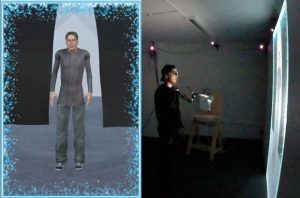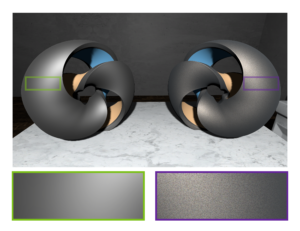Acquisition and Validation of Spectral Ground Truth Data for Predictive Rendering of Rough Surfaces
Olaf Clausen, Ricardo Marroquim and Arnulph Fuhrmann
In: Computer Graphics Forum, EGSR 2018, Karlsruhe, Germany

Abstract
Physically based rendering uses principles of physics to model the interaction of light with matter. Even though it is possible to achieve photorealistic renderings, it often fails to be predictive. There are two major issues: first, there is no analytic material model that considers all appearance critical characteristics; second, light is in many cases described by only 3 RGB-samples. This leads to the problem that there are different models for different material types and that wavelength dependent phenomena are only approximated. In order to be able to analyze the influence of both problems on the appearance of real world materials, an accurate comparison between rendering and reality is necessary. Therefore, in this work, we acquired a set of precisely and spectrally resolved ground truth data. It consists of the precise description of a new developed reference scene including isotropic BRDFs of 24 color patches, as well as the reference measurements of all patches under 13 different angles inside the reference scene. Our reference data covers rough materials with many different spectral distributions and various illumination situations, from direct light to indirect light dominated situations.
Paper
Final published paper and supplemental material: https://doi.org/10.1111/cgf.13470
Preprint
The pre-peer reviewed version of our article may be used for non-commercial purposes in accordance with Wiley Terms and Conditions for Use of Self-Archived Versions.
Preprint: PDF
Spectrally resolved Ground Truth Data
- GroundTruthData_v02.zip (update 30 October 2018: all data in one file, additional data and description)
The data is freely usable for research purposes.
©Copyright 2018 TH Köln



